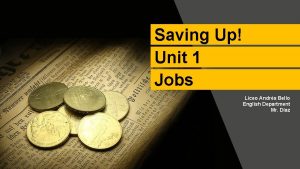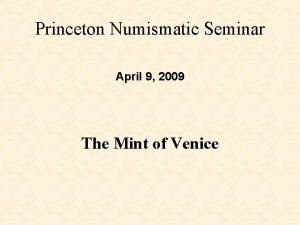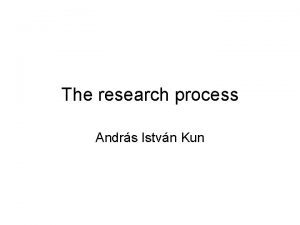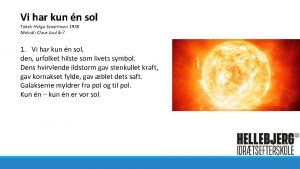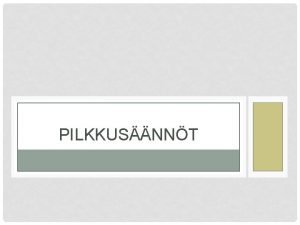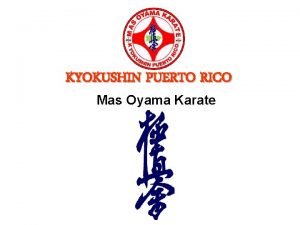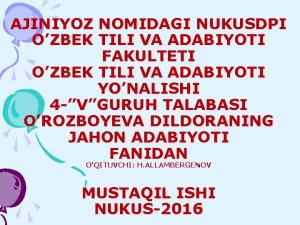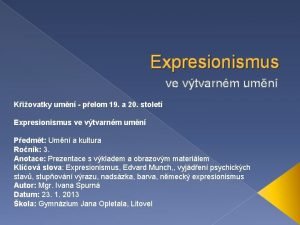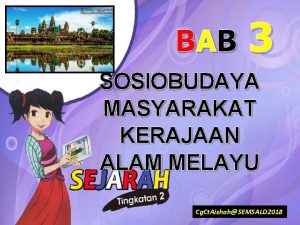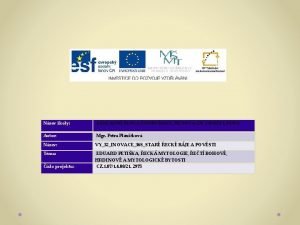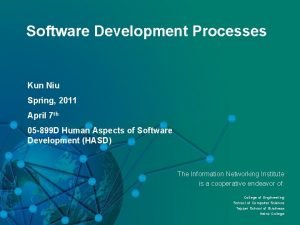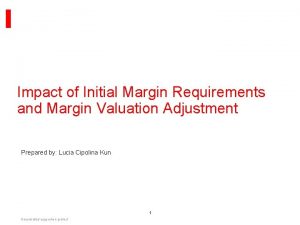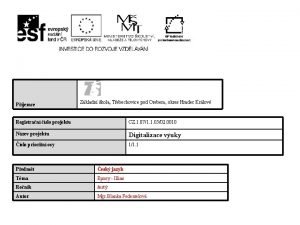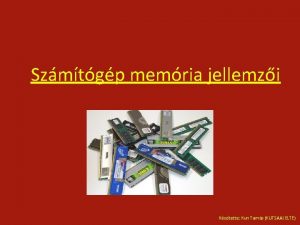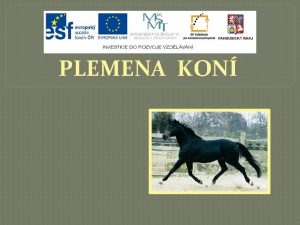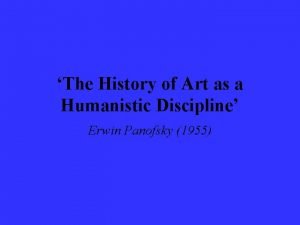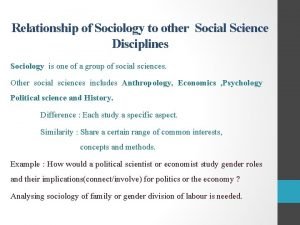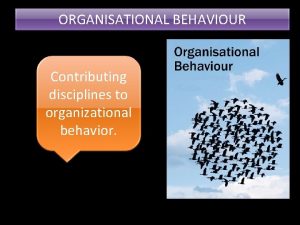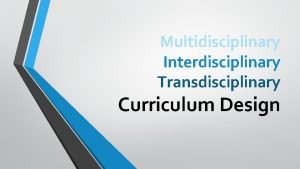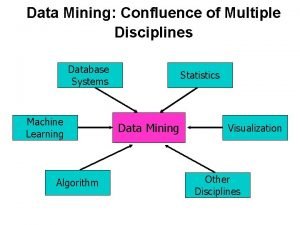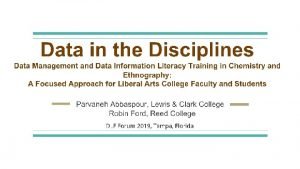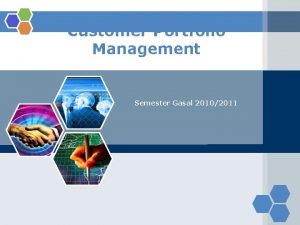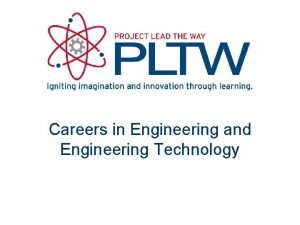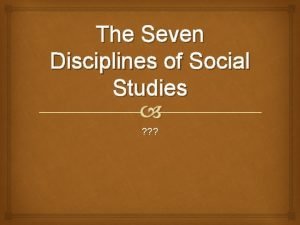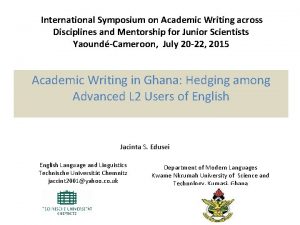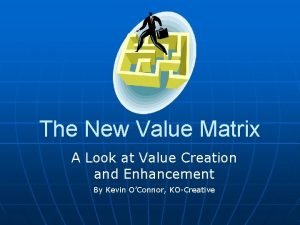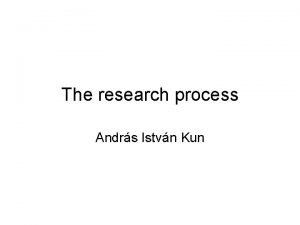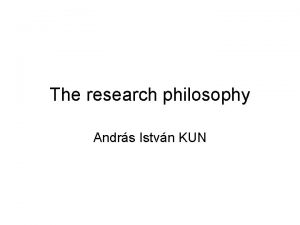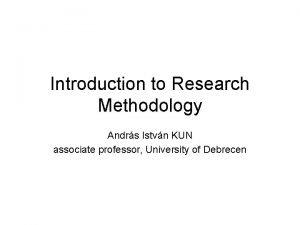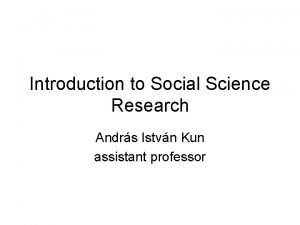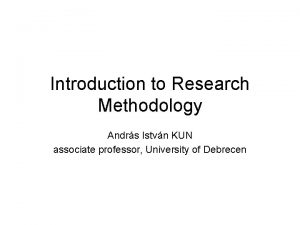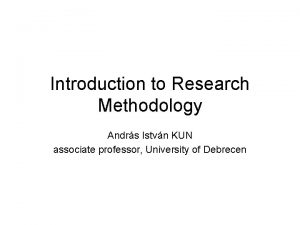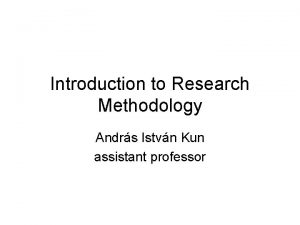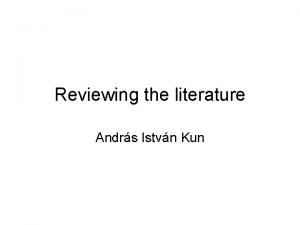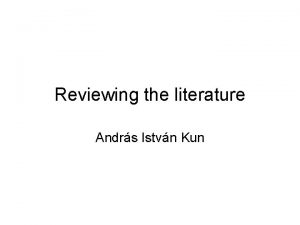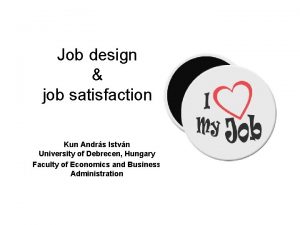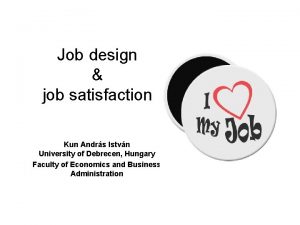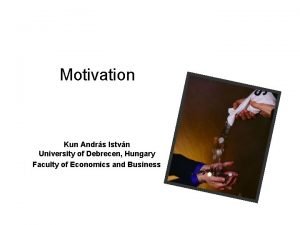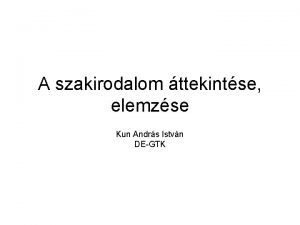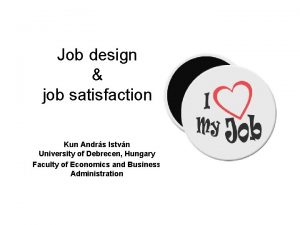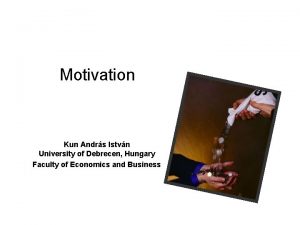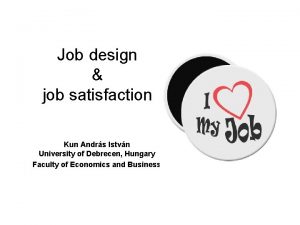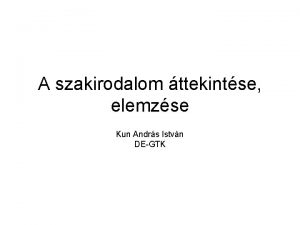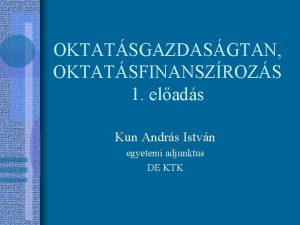The research process Andrs Istvn Kun Different disciplines





























- Slides: 29

The research process András István Kun

Different disciplines • Research methodology is a supporting subject • Different disciplines have different paradigms • Only the substance of research is similar

The Wheel of Science Theories Empirical generalizations Hypotheses Observations

The „research journey” • (I) Deciding what • (II) Planning how • (III) Actually doing

An 8 step model of research processes 1. Formulating the research problem (specification) 2. Conceptualizing (valid, workable, manageable) 3. 4. 5. 6. 7. 8. Constructing an instrument for data collection Selecting a sample (sampling) Writing a research proposal Collecting data Processing data Writing a report

Finding a good research topic • Topic: the wide or general problem + our approach (it is NOT the research question) • • • Interesting and motivating Feasible (knowledge, resources, time, connections, ethics) Timely, even when finished Theoretically grounded, and also provide contribution to theory Can be translated into research questions/aims/hypotheses Symmetry of potential outcomes Appropriate challenge level Accepted by the institution/buyer Contributes to the researcher’s career and/or development

Generating research ideas Source: Saunders, Lewis, Thornhill

An example how to explore your preferences via examining past projects Source: Saunders, Lewis, Thornhill

How to decide? • What am I interested in (motivation)? • What kind of work would I like to do (methods)? • What am I capable of (knowledge)? • What resources can I get an access to? (data!) • What help can I get (everything)? • (Who do I like to be my supervisor? ) • Do you like to join a larger research group or program ?

Purposes of reseach • Exploration: familiarizing with the topic/area/etc. • Description • Explanation – Idiographic (for few cases) – Nomothetic (looking or factors accounting for a large part of of the variation of a phenomenon)

Nomothetic causality • • Correlation / association Time order Nonspuriousness Necessary and sufficient causes

Difference between qualitative and quantitative research • Qualitative: – – – – Empiricist (sensation) Flexible/open/unstructured To describe variation, situation, issue… Fewer cases Wider focus (multiple issues) To explore Narrative • Quantitative: – – – – Rationalism (reason) Rigid/predetermined/structured Quantification Greater sample Narrow focus To explain Statistical methods, analytical

Source: Saunders, Lewis, Thornhill

Finding a good supervisor/consultant • Is it needed? • Should have: – – – Knowledge, skills Capacity Motivation/interest Can provide help with contacts, resources… Personality • Ways to find: – – Offered topics/titles Literature review Course lecturers Networking • How to get accepted? – Research proposal – Do have more than one ideas

Refining the research idea • • Decision supporting techniques Discussions Preliminary research: literature, pilot Integrating ideas

Conceptualization • Fuzzy and imprecise notions (concepts) are made more specific and precise. (specification of the concepts) • „What do you mean on…” type questioning. • Dimensions: a specifiable aspect of the concept. • Indicators: an observation considered as a reflection of a varible we wish to study.

What we can measure? • Direct observables • Indirect observables • Constructs

Progression of measurement 1. 2. 3. 4. Conceptualization Nominal definition Operational definition Measurements in the real world

Levels of measurement • • Nominal Ordinal Interval Ratio measure

Mesurement quality • Reliability – Test-retest method – Reliability of the researchers – Split-half method • Validity – Face – Criterion-related or Predictive – Construct (relation to other variables within theory) – Content (range of meaning)

Units of analysis • • • Individuals Groups Organizations Documents Social interactions and artifacts

Time dimension • Cross-sectional studies • Longitudinal studies – Trend studies – Cohort studies – Panel studies

The research question / aim • Must be derived from the reseach problem • Clear definitions, concepts are needed • This is what will be answered during the research (through this we will contribute to the understanding of the problem) • Must be one or a few. We can use subquestions if necessary. • Needs on the research method and the data are drawn from the questions. • The research aim is a translation of the question.

Questions vs. objectives

The Goldilocks test • A research question must not be – Too big – Too small – Too hot

General focus research question examples Source: Saunders, Lewis, Thornhill

Hypotheses • Hypothetical answers to the research questions • Can be supported or rejected through the research • Not always necessary, but can help

The research proposal • Why? – A help throughout the research project – To gain resources • There is no ultimate structure for research proposals. • A general one: – – Introduction/Motivation Literature Review Specifying the Problem/Question/Hypotheses/Aim/Topic Research design: data needed, data-collection method, data analysis, ethical issues – Schedule, budget, resource planning – Expected outcomes – References

Thanks for your attention
 Andrs bello
Andrs bello Andrs mint
Andrs mint Istvn
Istvn Istvn
Istvn Vi har kun en sol tekst
Vi har kun en sol tekst Pilkkusäännöt englanti
Pilkkusäännöt englanti Juramento karate kyokushin
Juramento karate kyokushin Asrga tatigulik kun rejasi
Asrga tatigulik kun rejasi Franz marc modrý kůň
Franz marc modrý kůň Sosiobudaya bina ayat
Sosiobudaya bina ayat Pul clovek napul kun
Pul clovek napul kun Kun niu
Kun niu Kouhai kun sakurasou
Kouhai kun sakurasou Margin valuation adjustment
Margin valuation adjustment A szerelem kémiája
A szerelem kémiája Epos o dobývání troje
Epos o dobývání troje Emmakadler
Emmakadler Formatálás
Formatálás Nonius kůň
Nonius kůň Art as a humanistic discipline summary
Art as a humanistic discipline summary Sociology and social science
Sociology and social science Disciplines of organisational behaviour
Disciplines of organisational behaviour Examples of transdisciplinary approach
Examples of transdisciplinary approach Confluence of multiple disciplines in data mining
Confluence of multiple disciplines in data mining Data management disciplines
Data management disciplines Basic disciplines for customer portfolio management
Basic disciplines for customer portfolio management Engineering disciplines
Engineering disciplines What are the 7 disciplines of social science
What are the 7 disciplines of social science Academic english reading and writing across the disciplines
Academic english reading and writing across the disciplines Michael treacy and fred wiersema
Michael treacy and fred wiersema
